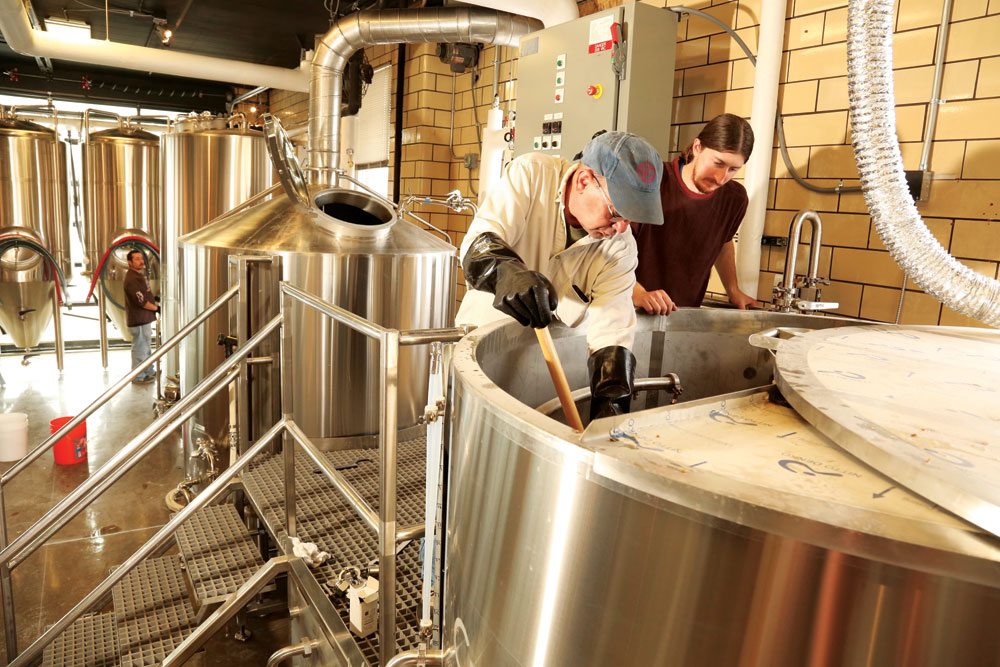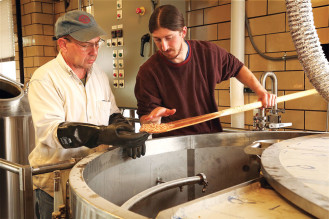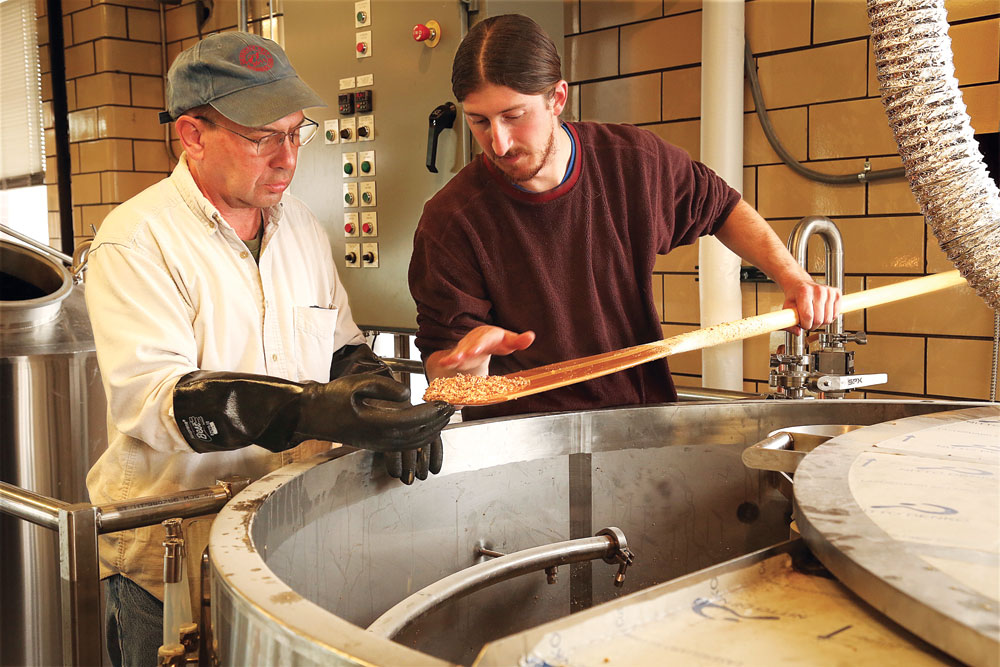 Colorado’s booze industry is in a renaissance, soon to eclipse that of the ski industry. And the ingredients for many of this industry’s products? Grown right in our own backyard.
Colorado’s booze industry is in a renaissance, soon to eclipse that of the ski industry. And the ingredients for many of this industry’s products? Grown right in our own backyard.
Why is this billion-dollar business burgeoning?
In part it has to do with our unique geographic, geologic and climatic conditions. These foster growth of plants whose characteristics are critical for fermented products. The boom is also due in part to a few favorable laws and some historical twists that catalyzed the industry’s economics and consumption culture.

Station Twenty Six Brewing Company at 7045 E. 38th Avenue uses Colorado barley and hops in their beer, and their Colorado Cream Ale uses only Colorado ingredients.

Owner Justin Baccary (right) and Head Brewmaster Wayne Waananen (left) are pictured looking at barley during their first-ever brew in November 2013.
Colorado has been awash in booze since before we even reached statehood. For example, in 1859 the first commercial alcohol was brewed by Denver’s now-defunct Rocky Mountain Brewery, and in the 1890s grapes from Palisade began getting squashed for vino.
Today such business is dominated by beer, followed by wine, whiskey and then other spirits. Behemoths like Budweiser’s Ft. Collins facility and the biggest brewery in the world (hint: it’s in Golden), produce veritable rivers of brew—nearly a billion 12-packs per year between them.
Craft beers, originally known as “microbrews,” are more labor-intensive to produce. Craft brewers offer a greater variety of locally sourced product lines, and their offerings often require more raw ingredients than do the megabrands featured on Super Bowl commercials. Take, for example, those delicious India Pale Ales, or IPAs. They’re among the most hop-intensive brews to produce, and one of the fastest growing sectors of the beer biz. Despite the fact that you can find wild hops growing near the base of many fourteeners, crops of commercial Colorado hops are scarce. But they’ve been gaining in popularity among farmers on the Western Slope largely because AC Golden (a “craft-brew” unit of Coors) helped growers invest in hop-vine infrastructure, resulting in an entirely locally sourced brew in 2010.
But the lynchpin of Colorado’s beer agriculture is mostly grown in the San Luis Valley. There, the high elevations (resulting in cool summer nights coupled with warm sunny days) and ancient river-borne soils combine to create a nirvana for barley used in booze. Despite the unirrigated drought-like conditions, the San Luis Valley produces twice as much of this type of barley per acre as anywhere else in North America. Such barley is a risky crop to grow given the extreme weather that can hit the area, but the area’s “normal” climate also retards some of the more typical blights and insects that plague other barley-growing areas. These factors combine to yield barley that’s low in protein with just the right amount of nitrogen, and that’s close to the Rockies’ epicenter of barley malting—Alamosa. Malted barley is used in beer brewing and also forms the backbone of our fledgling whiskey industry, where distillers like the team at Stranahan’s steep it in hot water to create mash, and then use its derivatives to make alcohol.
Colorado is home to another Goldilocks of growing conditions. The Western Slope’s Grand Valley and West Elks region has well-drained alkaline (i.e., not acidic) soil, dry air, and high-elevation conditions that enhance growth of some incredible grapes. Wines from such grapes are increasingly winning awards, not to mention changing the game on ye olde keep-your-pinky-out-while-swirling-a-goblet wine industry. For example, next time you’re flying Frontier, you can buy one of Colorado’s finest local wines—served in a can, no less.
While unique growing conditions contribute to the success of our brewers, vintners and distillers, so does our legal framework. By example, Colorado’s prohibition law, adopted four years before the rest of the nation, extinguished most brewers, and caused the nascent wine industry to collapse. Yet it birthed a new industry. Vineyard owners pulled out their trellises and instead planted the now-famous “Palisade Peaches.” The 1977 Limited Winery Act brought things full circle. It gave an economic boost to vineyards by allowing them to create on-site wine-tasting rooms that both generate on-site revenue and promote and distribute their product. Thus, bit by bit, vineyards are displacing peach orchards, in part due to the changing economics of these vineyard-friendly conditions, and in part because newer grapevine varieties are less sensitive to late spring frosts than are peach tree buds.

Barley field in Colorado’s San Luis Valley
Although craft brewing got its start in Hygiene, Colorado, in 1979, it wasn’t until the 1996 Brew Pub Liquor License Law when fortunes began to dramatically change for the beer industry because the law allowed brewers to easily open restaurants that brewed beer. It also allowed them to serve their beer without a restaurant, in what’s called an on-site taproom. Such tasting facilities are multiplying. Because taprooms can’t serve food, they in turn foster proliferation of food trucks to serve patrons.
What’s next? No doubt ingenious beverage enthusiasts will figure out new ways to exploit our unusual high-and-dry climate, soil, and regulatory landscape. Looking forward to it!
James Hagadorn, Ph.D., is a scientist at the Denver Museum of Nature & Science. Suggestions and comments are welcome at jwhagadorn@dmns.org.

